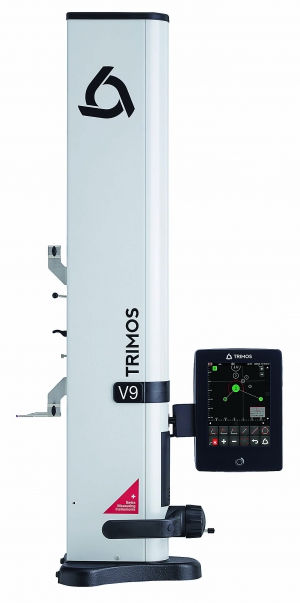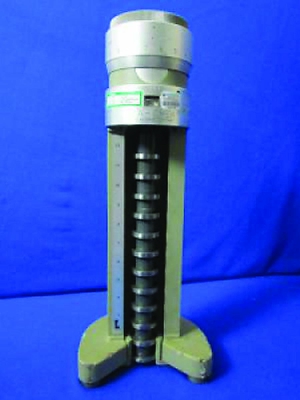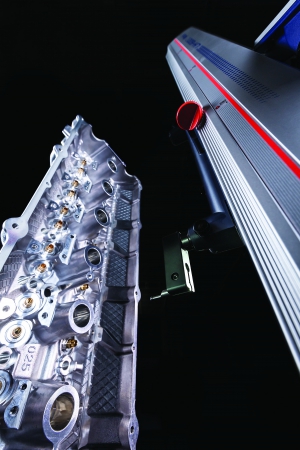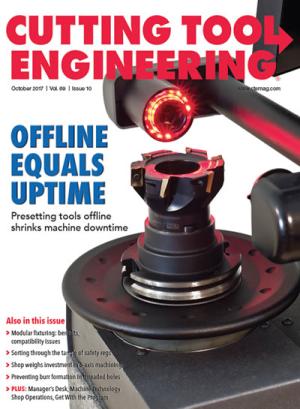Measuring machined parts on a surface plate has long been a tedious job, one that requires mastery of dial indicators, a pocket calculator and an adjustable height gage that most in the industry refer to as a “Cadillac gage.”
But several metrology providers offer a more sophisticated way to quickly and accurately check hole diameters, the distance between part features, centerlines and more. The tool is called an electronic height gage, and it has made Cadillac gages about as popular as whitewall tires.


There’s a ‘night-and-day’ difference between inspecting parts with an electronic height gage (left) and traditional Cadillac height gage.
“If you’re still measuring the old-fashioned way, an electronic height gage will change your world,” said Anthony Dilorio, regional manager at Fowler High Precision Inc., Newton, Mass. “As an example, checking even a simple diameter with an indicator and Cadillac gage requires you to sweep the bore for the low spot, find that value on the Cadillac, jot it down, repeat the process for the top of the hole, then subtract the first value from the second. With an electronic gage, you sweep the top, sweep the bottom and you’re done. It’s a night-and-day difference.”
Because the policy at many shops is to make a CNC machine and its operator wait for first-piece inspection on new setups, faster throughput in the inspection lab reduces machine downtime. And for shops whose coordinate measuring machine is a bottleneck, off-loading some of the simpler work to a substantially lower-cost measuring device makes good sense as well.

Mitutoyo’s motorized LH-600E height gage is accurate down to 1.1µm. Image courtesy of Mitutoyo America .
“Depending on the model and features, you can think of an electronic height gage as a single or 2-axis CMM,” said Mike Grosenbach, product specialist for distributed products at Mitutoyo America Corp., Aurora, Ill. “The accuracy of some machines is down in the 0.000045" range, comparable to a CMM. They’re also much easier to use; operators with minimal training can walk up and check most part features on their own.”
Both manufacturers offer a variety of easily calibrated probe and stylus options, support for USB and RS-232 communication, integration to external statistical process control and metrology software, air-assist and advanced-measurement functions, such as perpendicularity, min./max./delta and angle measurement.
Contact Details
Related Glossary Terms
- computer numerical control ( CNC)
computer numerical control ( CNC)
Microprocessor-based controller dedicated to a machine tool that permits the creation or modification of parts. Programmed numerical control activates the machine’s servos and spindle drives and controls the various machining operations. See DNC, direct numerical control; NC, numerical control.
- metrology
metrology
Science of measurement; the principles on which precision machining, quality control and inspection are based. See precision machining, measurement.
- process control
process control
Method of monitoring a process. Relates to electronic hardware and instrumentation used in automated process control. See in-process gaging, inspection; SPC, statistical process control.
- statistical process control ( SPC)
statistical process control ( SPC)
Statistical techniques to measure and analyze the extent to which a process deviates from a set standard.


